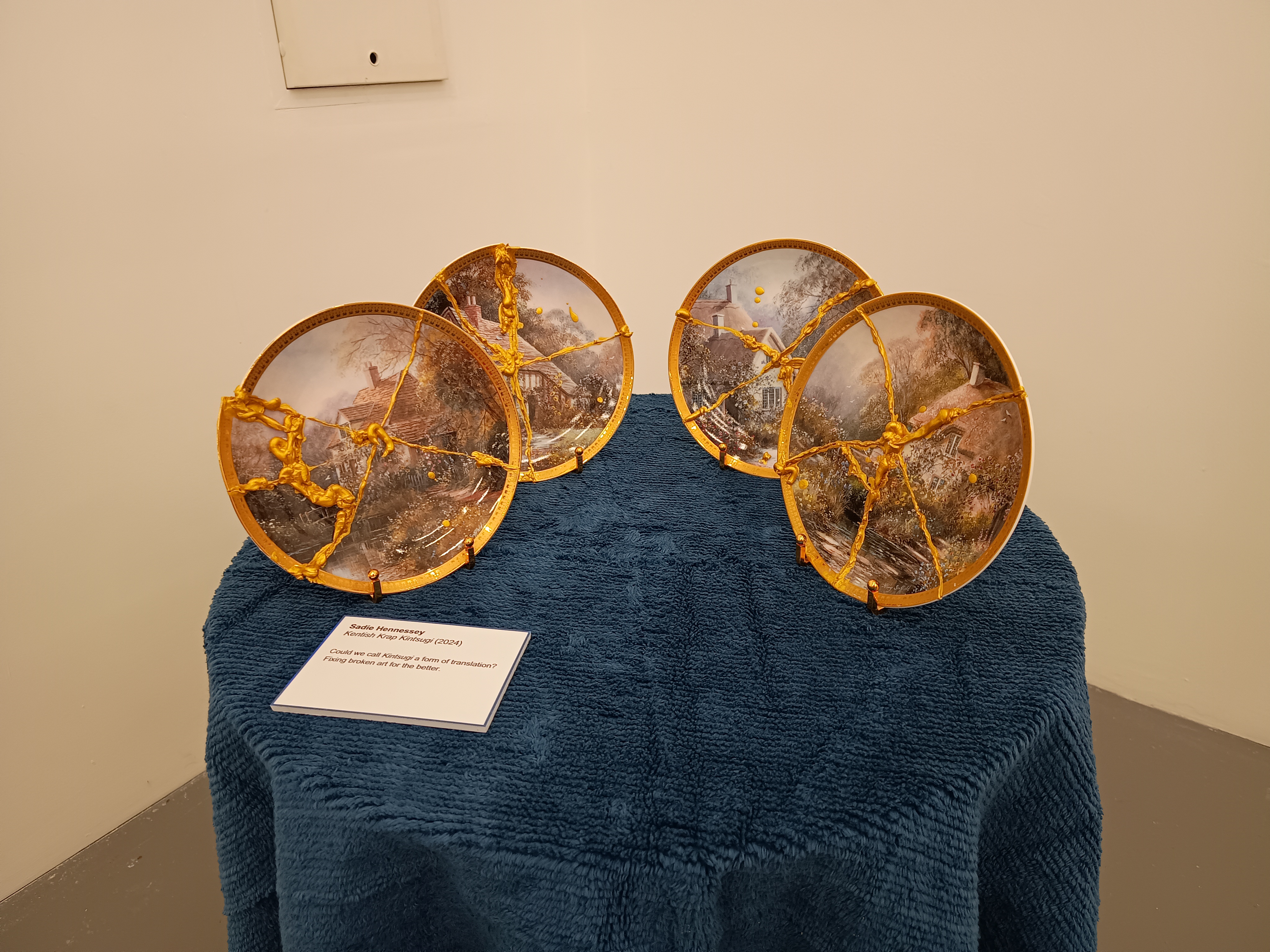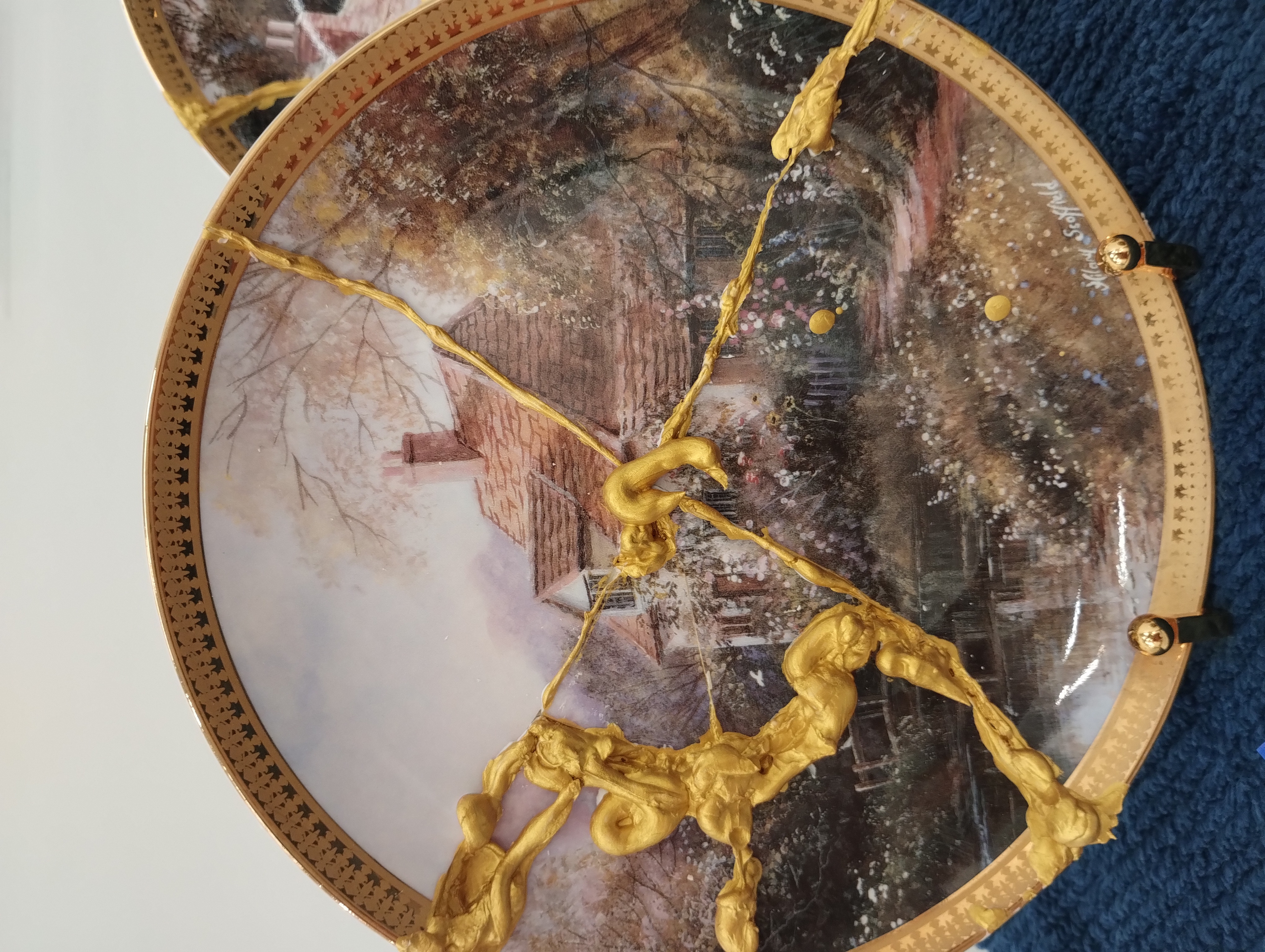wabi-sabi – Finding beauty in the flawed or imperfect

Sadie Hennessy’s Kentish Krap Kintsugi illustrates the Japanese art of Kintsugi, the act of mending by piecing broken ceramics back together with gold to give them new value, and greater meaning. The gold works to highlight the breaking points, rather than hiding the weakness in the object. Kintsugi dates back as far as the 15th century, and today is often used to make art rather than for functionality.
In the case of this work, plates depicting cottages in Sandwich were smashed and haphazardly pieced back together by the artist. Hennessy takes this artform and turns it into something far less functional – these plates are no longer useable – with pieces overlapping each other, and gold applied thickly, dripping over the ceramic.

Following the theme of translation, and getting lost in it, kintsugi takes one item and transforms it into something different in the process of mending. Especially in the case of Hennessy’s ‘krap’ kintsugi, we again see that through the process of piecing something back together – whether fiction, history or plates – that what we end up with is something altogether different. Can we use the plate as a reliable source of what the original looked like?
Hennessy, based in Kent, also contributed Hooden Horse to the Museum of Imagined Kent. Her works can be distinguished by their bold aesthetic – through bright colour, shiny material or flashing lights – as well as humour and whimsy.
See more of Sadie Hennessy’s work here
Learn more about kintsugi here
